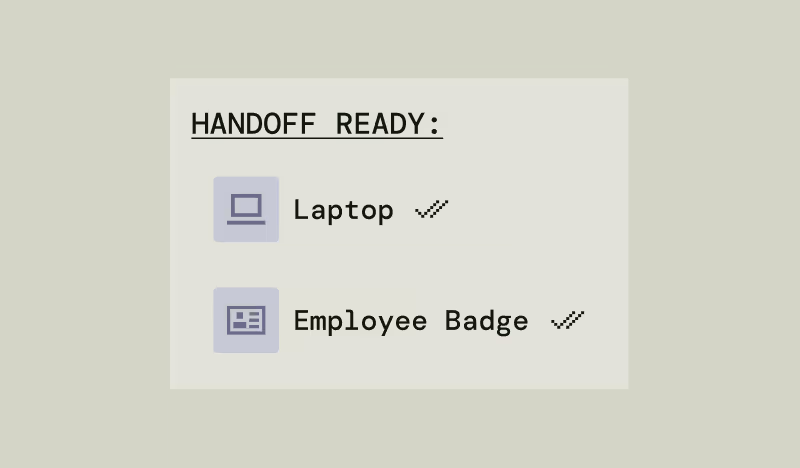



The Hidden Tax of Vendor Questionnaires (and How to Eliminate It)
Startups that try to “just handle it” lose hours of productivity, frustrate engineers, and risk inconsistent answers that spook buyers.

Table of Content
Every scaling startup hits the same wall: the vendor security questionnaire.
At first, it’s one or two forms a quarter. Then, suddenly, every prospective customer sends a 200-question spreadsheet asking how you encrypt data, manage laptops, or handle incident response. Before long, your engineers are spending 10–15 hours a month answering questions that have nothing to do with building product.
At Rovally, we’ve seen this story play out dozens of times. Vendor questionnaires aren’t just busywork — they’re a tax on growth. Here’s what startups need to know.
Why Vendor Questionnaires Hurt More Than You Think
On the surface, these forms look harmless. But every hour your CTO or lead engineer spends filling them out is an hour not spent on roadmap, shipping features, or closing bugs.
The hidden costs include:
- Engineering distraction: losing momentum on core product.
- Inconsistent answers: different team members answering differently, raising red flags with prospects.
- Sales friction: long delays responding to questionnaires drag out deals.
- Missed opportunities: some startups stop bidding on contracts because they can’t keep up.
⚠️ Failure example: One early-stage SaaS company we met was juggling five questionnaires at once. Each engineer was pulling answers from memory or Slack threads. Inconsistent responses spooked a major enterprise buyer, who put the deal on hold. That was $400k ARR lost to poor process.
Why Questionnaires Keep Coming
Here’s the truth: vendor security questionnaires are not going away. In fact, they multiply as you grow.
- Seed → Series A: You might see one every few months.
- Series B+: Expect one for every enterprise prospect.
- Regulated industries (healthcare, fintech, gov): They’ll be long, detailed, and unforgiving.
Even if you’ve passed SOC 2, ISO, or HIPAA, buyers will still ask for a questionnaire. Why? Because it’s how procurement teams map your controls to their risk framework. It’s “trust, but verify.”
How SOC 2 Helps (But Doesn’t Solve It)
Having a SOC 2 report in hand helps. You can often respond to 70–80% of questions by pointing to your audit report. But here’s the catch:
- Not every buyer accepts it. Some require their own form anyway.
- Reports aren’t self-explanatory. Someone has to interpret the SOC 2 language into plain answers for the prospect.
- Controls shift over time. If you don’t keep your SOC 2 program current, answers drift out of sync.
📈 Win example: At CalypsoAI, their engineers were buried in questionnaires. We stepped in, mapped answers to their SOC 2 report, and built a central repository of approved responses. Result: engineers reclaimed ~15 hours/month, and sales cycles sped up.
The Systems You Need to Handle Questionnaires Efficiently
Without systems, questionnaires feel like reinventing the wheel every time. Here’s what auditors — and customers — expect you to have in place:
- Central knowledge base: A curated library of security answers vetted by compliance experts.
- SOC 2/ISO evidence package: So you can reference existing audits instead of drafting fresh responses.
- Consistent ownership: One accountable team (not “whoever has time”) to manage questionnaires.
- Automation + operators: Tools like Drata/Vanta help, but without people to run them, answers drift and errors creep in.
⚠️ Failure example: One startup copy-pasted answers from random Slack threads into a questionnaire. Procurement spotted inconsistencies against their SOC 2 report and escalated. The deal stalled for three months.
The Operator’s Fix: Done-for-You Questionnaire Management
The real answer isn’t throwing more engineers at the problem. It’s building a function — or in Rovally’s case, embedding one.
When we run questionnaire management for clients, we:
- Build a central answer repository mapped to SOC 2/ISO frameworks.
- Maintain evidence packages so responses are backed by proof.
- Take ownership of questionnaires directly, working with sales and auditors.
- Free engineers to focus on shipping product.
📈 Win example: At Fixify, we handled 50+ questionnaires in a year, each turned around quickly and consistently. Their sales org didn’t stall once, and engineers stayed focused on core product.
The Takeaway
Vendor questionnaires aren’t a side task — they’re a hidden tax on your engineering team and a drag on revenue.
Startups that try to “just handle it” lose hours of productivity, frustrate engineers, and risk inconsistent answers that spook buyers. Startups that invest in process — or partner with operators who run it for them — close deals faster and keep their team building.
At Rovally, we don’t hand you templates. We manage the entire process as your embedded compliance and IT team, so you can stop worrying about vendor questionnaires and start focusing on growth.
Ship product. Close deals. Leave questionnaires to us.

Keep Building.
We’ll Handle the Rest.
Compliance, security, and IT done for you — so your startup can scale without distraction.



